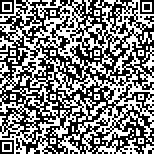附件
|
| 引用本文: | 蔡元锋,施丽梅,李朋富,邢鹏,于洋,孔繁翔.与微囊藻胞外多糖降解相关的微生物菌群分析.湖泊科学,2009,21(3):369-374. DOI:10.18307/2009.0309 |
| CAI Yuanfeng,SHI Limei,LI Pengfu,XING Peng,YU Yang,KONG Fanxiang.Composition of bacterial community related to degrading the exopolysaccharide from the cyanobacterium Microcystis aeruginosa. J. Lake Sci.2009,21(3):369-374. DOI:10.18307/2009.0309 |
|
| |
|
|
| 本文已被:浏览 8458次 下载 5694次 |

码上扫一扫! |
|
|
| 与微囊藻胞外多糖降解相关的微生物菌群分析 |
|
蔡元锋1,2, 施丽梅1, 李朋富1,2, 邢鹏2, 于洋2, 孔繁翔2
|
|
1.南京大学生命科学学院, 南京 210093;2.中国科学院南京地理与湖泊研究所湖泊与环境国家重点实验室, 南京 210008
|
|
| 摘要: |
| 从铜绿微囊藻培养液中提取胞外多糖,化学分析显示其为含8.3%蛋白质的酸性杂多糖.以胞外多糖为碳源接种自然水体的菌群进行富集培养,分析胞外多糖的微生物降解过程及降解菌的组成.结果表明,接种太湖水华期微生物富集菌群后,多糖立即开始被降解,大约在18d后多糖降解过程显著减慢,37d后仍有一部分多糖未能被降解.这些结果说明在自然界中微囊藻胞外多糖是可以被微生物降解的.比较不同水体的菌群对多糖的降解能力后显示,降解菌群只存在于微囊藻水华暴发的阶段.变性梯度凝胶电泳(DGGE)结果显示在整个降解过程中,降解菌群的组成未发生显著变化.对DGGE条带中的DNA片段进行序列分析和系统发育分析表明降解菌群包含以下几类:鞘氨醇单胞菌属(Sphingomonas)3个,褐螺菌属(Phaeospirillum)1个,假单胞菌属(Pseudomonas)1个,红环菌科(Rhodocyclaceae)1个,Hylemonella(无译名)1个,分枝杆菌属(Mycobacterium)1个. |
| 关键词: 微囊藻 胞外多糖 降解 变性梯度凝胶电泳 菌群 |
| DOI:10.18307/2009.0309 |
| 分类号: |
| 基金项目:江苏省自然科学基金(BK2007150);国家重点基础研究发展计划(2008CB418004);中国科学院王宽诚博士后工作奖励基金联合资助 |
|
| Composition of bacterial community related to degrading the exopolysaccharide from the cyanobacterium Microcystis aeruginosa |
|
CAI Yuanfeng1,2, SHI Limei1, LI Pengfu1,2, XING Peng2, YU Yang2, KONG Fanxiang2
|
|
1.School of Life Sciences, Nanjing University, Nanjing 210093, P. R. China;2.State Key Laboratory of Lake Science and Environment, Nanjing Institute of Geography and Limnology, Chinese Academy of Sciences, Nanjing 210008, P. R. China
|
| Abstract: |
| The acidic heteropolysaccharide released by a water-bloom cyanobacterium Microcystis aeruginosa FACHB-912, which contained 8.3% protein, was used as the carbon source in stable enrichment cultures inoculated with natural aquatic microbial communities. The process of microbial breakdown of the exopolysaccharide and composition of the microbial community related to degrading exopolysaccharide were investigated. After inoculation of aquatic microbial community from Lake Taihu, enrichment cultures were obtained. In the enrichment culture, the exopolysaccharide was degraded immediately. The breakdown of the exopolysaccharide slowed markedly after about 18d, left a nondegraded fraction after 37d. The above data, together with comparison experiments on degradation capability of bacterial communities from various aquatic environments, indicated that the exopolysaccharide from M. Aeruginosa FACHB-912 could indeed be degraded by microorganisms coexisting only with the water bloom in nature. Denaturing gradient gel electrophoresis (DGGE) analysis showed composition of the microbial community did not change significantly during exopolysaccharide degradation. Phylogenetic analysis on DNA fragments, which were excised from DGGE gels, placed three degraders in Sphingomonas, one in Phaeospirillum, one in Pseudomonas, one in Rhodocyclaceae, one in Hylemonella, and one in Mycobacterium. |
| Key words: Microcystis aeruginosa exopolysaccharide microbial degradation DGGE bacterial community |
|
|
|
|